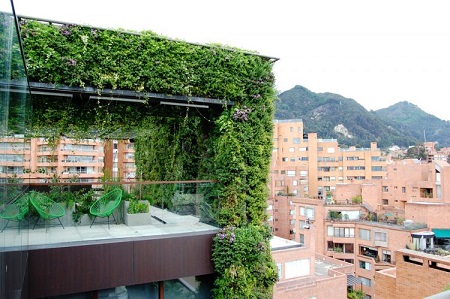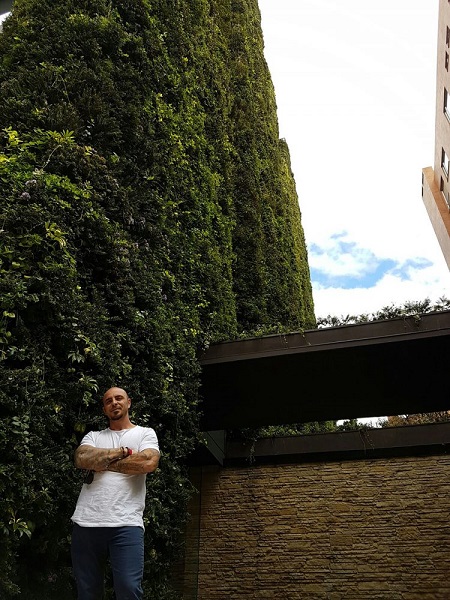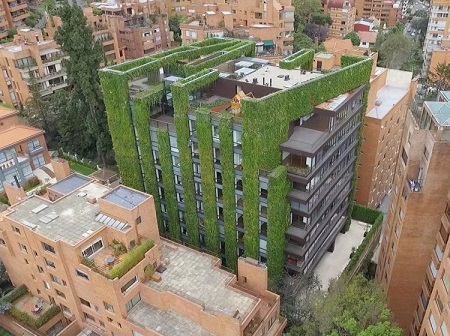1.4K



A really huge building in Bogota has been revealed to actually be the world’s largest vertical garden.
Edificio Santalaia, a plant-covered building in the middle of Bogota, Colombia, is considered one of the most amazing urban gardens ever created. With over 33,000 Sq. feet of plants covering the building’s 11 stories (9 above ground and 2 underground), this is the world’s largest vertical garden.
The result of a collaboration between Spanish green designers Paisajismo Urbano and Colombian company Groncol, this stunning vertical garden was completed in December 2015, after eight months of planning, and another eight months of hard work.
Today, it is often referred to as “the green heart of Bogota”, and acts both as an icon of sustainability, as well as a reminder of the important role that plants play in our daily lives.
The world’s largest vertical garden consists of 115,000 plants of 10 species and 5 different families, selected by Ignacio Solano, head of Paisajismo Urbano, and his team, during an expedition into Colombia’s Chocó rainforest. There were several things that needed considering, like the way these plants interact, and achieving a monochromatic coverage of the whole building.
“The selection of the species is fundamental in this type of gardens, since the biodiversity in a vertical ecosystem allows the interaction between the species that form it, both plants and microorganisms,” Solano said. “The large surface area involved was an additional difficulty compared to other vertical gardens , since it involved the use of a greater number of plants”

But perhaps the greatest challenge faced by Solano and collaborators was the irrigation system required to keep all the plants alive in the heart of the city. The great diversity of species chosen to create this impressive garden made adjusting the chemical parameters of the water and the nutrients it contains a critical condition.
Paisajismo Urbano ended up using a patented system made up of over 40 irrigation sectors that are automatically regulated according to humidity and solar radiation.

The system is also designed to recycle all the leftover water flowing through the living walls of the Edificio Santalaia, as well as the wastewater generated by its human inhabitants.

Creating the world’s largest vertical garden wasn’t only about aesthetics or sending a message. The 115,000 plants living on the walls of EdificiaoSantalaia have a greater purpose, according to Paisajismo Urbano.


